Last Updated on
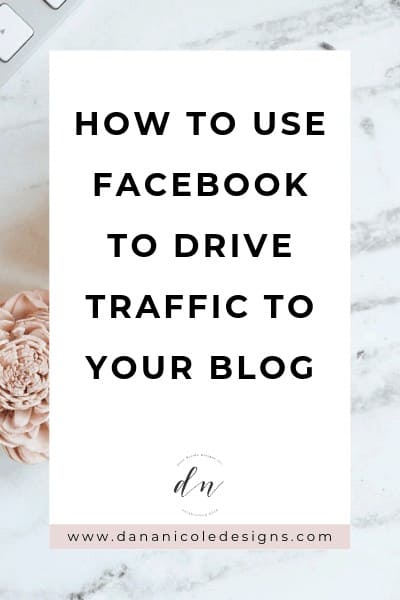
Facebook is the most widely used social media platform with 2.7 billion people using it. Chances are, your blog’s audience is not only on Facebook, but actively participating and engaging with content just like yours!
When used correctly, Facebook can drive thousands of targeted visitors to your blog each day.
But Facebook can be a tough social media to crack, and bloggers often promote their blogs incorrectly on the platform.
Been there, done that! I’m here to help you learn from my mistakes to build a Facebook strategy that will work!
Organic reach on Facebook is declining and to benefit from Facebook, you’ll need to be strategic. Today, I want to show you the best way to use Facebook to drive loads of targetted traffic to your blog!
Join The Right Facebook Groups
Joining the right Facebook groups is key to growing your blog’s Facebook presence in 2019. In April, Facebook shifted its focus to groups. While organic reach is declining on Facebook, group reach is on the rise and now is the perfect time for you to experiment with Facebook groups!
Many bloggers join the wrong Facebook group to start and then aren’t able to benefit from an increase in traffic.
If you want to get more traffic, readers and subscribers to your blog, don’t join Facebook groups for bloggers.
Yes, you read that right.
Facebook groups for bloggers are not the place to be if you want to drive traffic. Blogging threads such as click-through threads and comment threads do nothing but provide you with fake engagement.
Not to mention, they are a lot of work to reciprocate!
Blogging groups are a great place to connect with other bloggers and to learn about blogging, but they are not the place to “hang out” if you do not write about blogging tips.
Typically, these groups also don’t allow links posted to the main wall as they would quickly become full of spam and irrelevant content.
If you want to get traffic from Facebook, you need to focus on finding groups where your audience is hanging out.
To start, begin by searching for common phrases or keywords related to your niche.
For example, another blog I created is in the pet niche, so for this example, I will begin by searching for “dog lovers”, which will bring up the following groups:
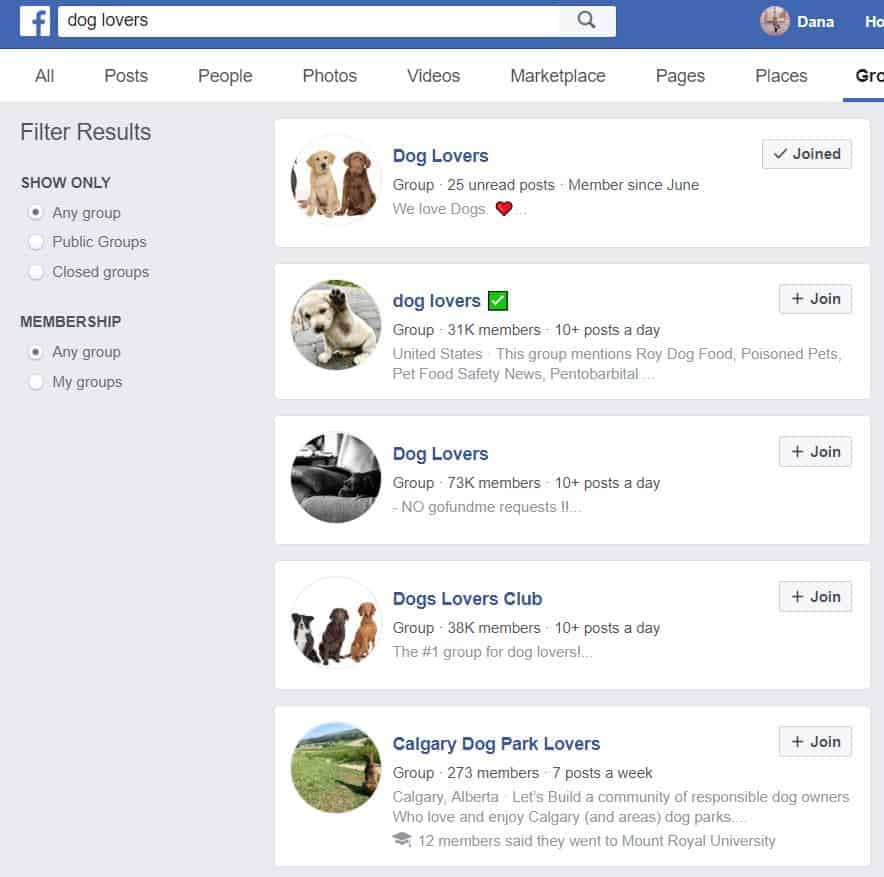
It’s best to join a variety of different groups (all different sizes) to see which ones are best. You might also not know where to start. If you write about a variety of different topics, join several different group types and see which demographics your content resonates the most with!
Once you are in the group, you will want to familiarize yourself with the group rules.
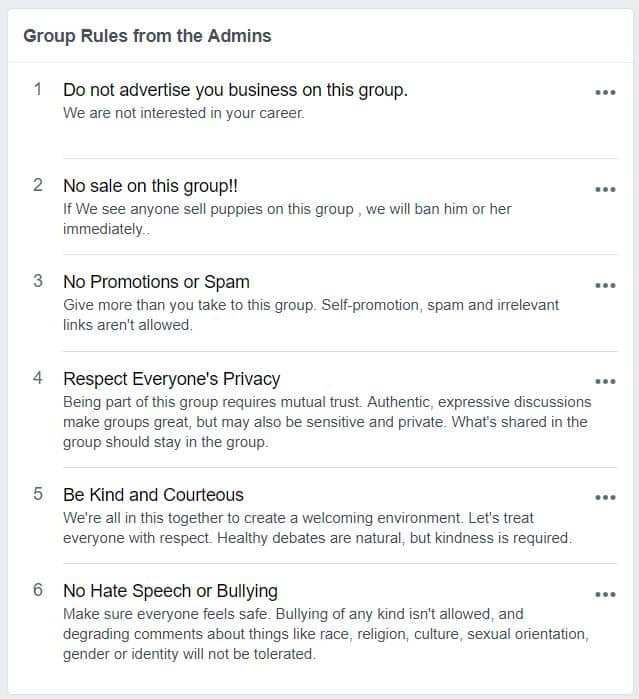
Interact Within The Facebook Groups
Once you have joined several groups, your next step is to start interacting with people within the group.
You can interact by posting helpful content (not your own, just yet), answering questions, and replying to other people’s comments.
This is an essential part of your Facebook marketing strategy. Facebook group admins can see if you have recently joined a group and are just spamming your content to the main wall.
That will get you banned.
As you can see in the rules I’ve screenshotted from one of the groups I’m in, it mentions to “give more than you take”. This should be your mantra going forward in Facebook groups!
Get to Know The Audience
Facebook groups are a goldmine of data. Within your group, take a look at previous posts and see what type of content did well and generated the most discussion!
In some groups, you might find that funny memes do the best, while informative articles don’t get much traction. This wouldn’t be the ideal group for you to be in if you were hoping to share your blog content.
Post Your Article
After you’ve joined several groups, got to know the audience and found out what content resonates with them, it’s time for you to post your article!
Now, there are specific ways to do this so it’s not spammy!
First, find an article (or write a new one) that is hyper-targetted to the people in the Facebook group!
Remember: you want to be providing immense value for everyone, so make sure your article is something they will want to read.
Secondly, post a little bit about what your article is about and ask a question to encourage people to interact with it.
The more interaction your post gets, the more people Facebook will show it to (in their home feed).
Take my most recent post, for example:
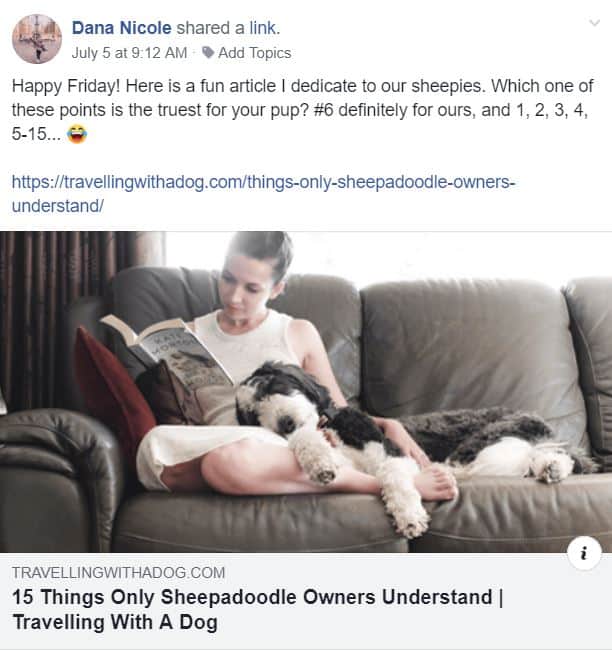
This particular group is a group I’m in for our dog’s breed. I didn’t join this group to promote any content. In fact, when I initially joined, I didn’t even have a blog!
However, I’ve been interacting with this group for years, and we all have a love for dogs, so I figured this was a great place to share an article that was tailored just to owners of a Sheepadoodle dog.
In the post, I also asked which point was most accurate for them as a dog owner, encouraging members to interact with my post.
Interact and Monitor Your Results
Once you have posted your article, don’t forget to continue interacting with people who comment on your post by answering any questions that come your way or responding to feedback.
While the article I posted above was a light and fun article, you might also find that posting case studies, comparisons, YouTube video tutorials or other types of content work better for you.
By posting that article in two targeted Facebook groups, I was able to drive a ton of traffic to my blog.
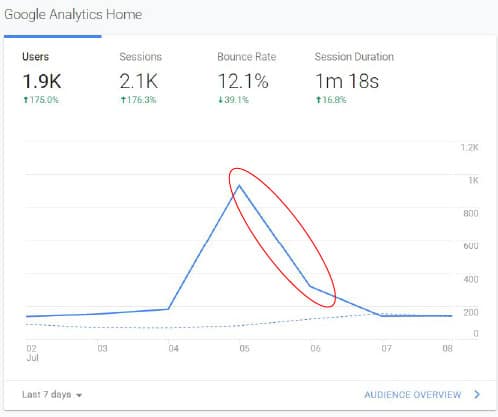
As with any new blog, SEO takes time so being able to find ways to get an influx of traffic while you wait for your traffic to increase over time can be great!
From the additional traffic I also received:
- two sales from my e-commerce shop
- 20 new group members to my own private Facebook community
- new email subscribers
- social shares
- targeted data for my Facebook pixel to use on future Facebook ads
In Conclusion: Using Facebook Groups to Drive Traffic to Your Blog
Using Facebook groups to drive traffic to your blog won’t give you passive traffic like SEO will, however, when done correctly, it can pay off.
In my traffic analytics above, you can see how by posting my link in two targeted Facebook groups I was able to skyrocket my traffic for a day, with the second day bringing in less traffic (but still slightly more than average).
This is something I will be incorporating in my strategy each week to drive traffic back to my blog while I wait for the SEO component of it to bring in passive traffic.
It’s also a fantastic way to connect with your audience to see what types of content they are after and how you can better serve them.
This article may include affiliate links. As an Amazon Associate I earn from qualifying purchases.

Dana Nicole is an award-winning freelance writer for MarTech/SaaS who was rated one of the best SaaS writers by Software World. She specializes in writing engaging content that ranks high in search engines and has been featured in publications like Semrush, ConvertKit, and Hotjar.
Dana holds a Bachelor’s degree in Business Administration and has over 15 years of experience working alongside national brands in their marketing departments.
When Dana’s not working, you can find her dancing en pointe, cooking up new recipes, and exploring the great outdoors with her two big dogs.

